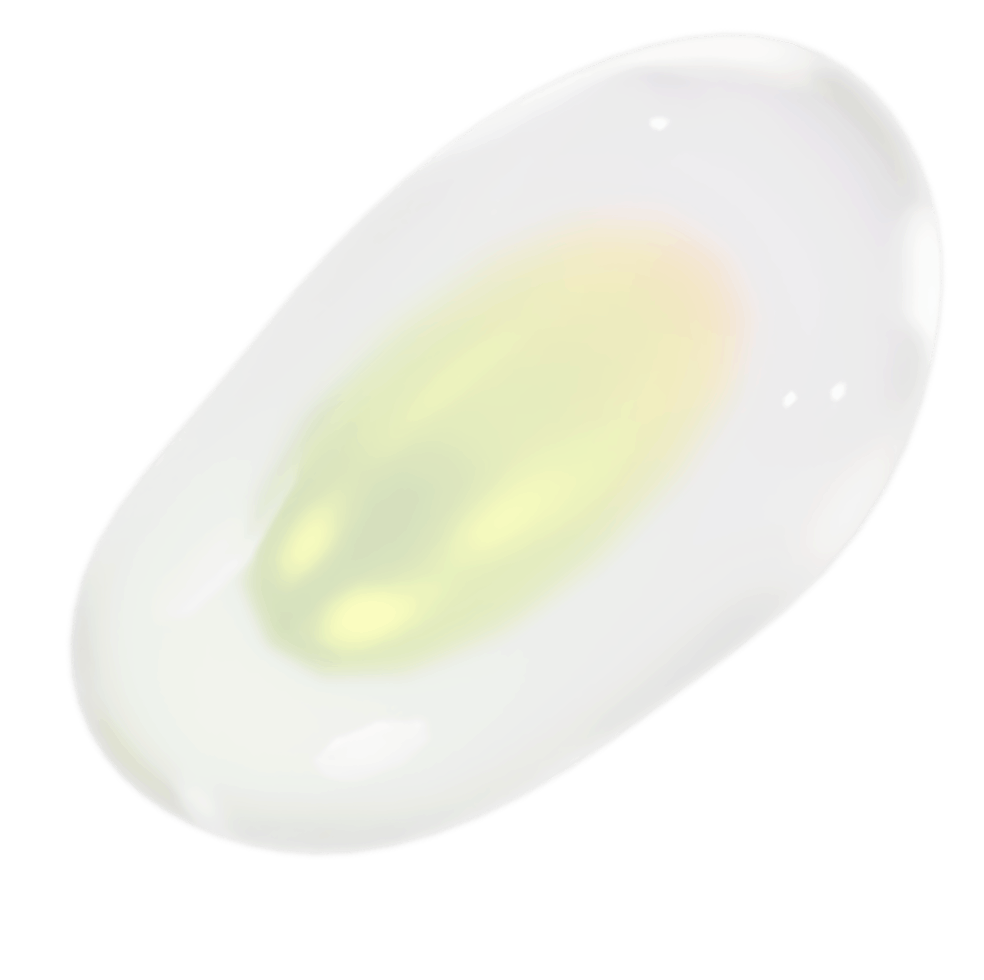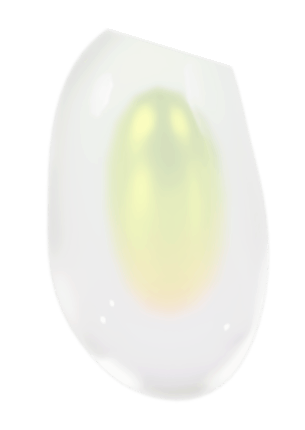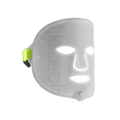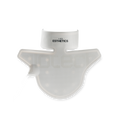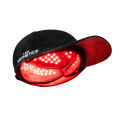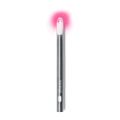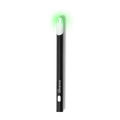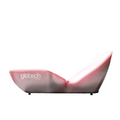Red Light Therapy
Red light therapy (RLT) is an innovative treatment gaining significant attention for its ability to reduce wrinkles, redness, acne, scars, and other visible signs of aging. Research continues to expand, with many users and studies already highlighting the positive benefits. If you're considering red light therapy, it’s important to understand how it works, what it can offer, and how to safely incorporate it.What is red light therapy?
Red light therapy (RLT) uses low-level wavelengths of red light to improve skin appearance by reducing wrinkles, acne, redness and promoting scar healing.
While there’s a lot of on-going clinical research on its effectiveness across a range of uses, available studies support the promising benefits of red light therapy. It’s often recommended to be paired with other treatments or wellness practices for optimal results, as it works best when incorporated into a broader skincare or recovery regimen.
Other names used to describe RLT include:
- Low-Level Laser Therapy (LLLT)
- Cold Laser Therapy
- Soft Laser Therapy
- Non-Thermal LED Light Therapy
- Low-Level Light Therapy (LLLT)
- Light Emitting Diode (LED)Therapy
- Photobiomodulation
- Phototherapy
How did red light therapy start?
The interest in red light therapy began with NASA’s experiments in the 1990s. Researchers explored how red light could promote plant growth in space, and coincidentally observed that it also accelerated astronauts’ wound healing. This groundbreaking work spurred further studies into RLT’s potential therapeutic applications on Earth.
Today, red light therapy is used in various medical and cosmetic settings. Dermatologists often utilize it for skin conditions, while physical therapists and athletic trainers explore its benefits for injury recovery and pain relief. Though clinical devices typically offer stronger settings, advancements in technology have brought at-home devices on par with professional-grade treatments, delivering comparable results.
How does red light therapy actually work?
Red light therapy works by enhancing the energy production within mitochondria, allowing cells to repair and rejuvenate more effectively.
The mitochondria — the "powerhouses" of your cells — absorb red light, helping them repair damage, boost collagen production, and reduce inflammation, all of which are essential for improving skin health and minimizing visible signs of aging. They then convert red light into extra energy, enhancing the cells' ability to rejuvenate more effectively.
Specifically, red light therapy supports skin health by:
- Stimulating collagen production for firmer, more youthful-looking skin
- Enhancing fibroblast activity to rebuild damaged or aging tissue
- Improving blood circulation to nourish the skin and underlying layers
- Reducing inflammation linked to redness, acne, and other skin conditions
While researchers continue to study exactly how light interacts with our cells, these mechanisms help explain why red light therapy has become a popular solution for improving skin health.
What skin conditions may red light therapy be used for?
Red light therapy can be used for a variety of common skin conditions and is often promoted as a treatment for:
- Reducing the appearance of wrinkles, fine lines, and sunspots
- Improving acne and other skin conditions like psoriasis and eczema
- Fading scars and stretch marks
- Accelerating wound healing and tissue repair
- Supporting hair regrowth for individuals experiencing hair thinning
- Managing pain and inflammation from arthritis, tendonitis, or general injuries
- Enhancing muscle recovery post-exercise
It’s important to note that most users report positive results within a few weeks, but individual experiences may vary.
How effective is red light therapy?
In clinical observations, many users have reported improvements in skin texture, including smoother skin, reduced redness, and diminished dark spots after consistent treatment. Similar positive outcomes have been noted in studies where red light therapy was used in combination with other dermatological treatments, helping to reduce swelling and discoloration.
As a result, studies suggest that RLT provides benefits in key areas, including:
- Skin rejuvenation (e.g., reducing wrinkles and improving elasticity)
- Accelerating healing of minor wounds and burns
- Reducing inflammation and associated pain
Effectiveness often depends on factors such as the light wavelength, treatment duration, and the condition being targeted. That said, noticeable results require using high-quality red light therapy devices consistently over time.
Is red light therapy safe, and does it have side effects?
Red light therapy is a safe, non-invasive treatment with no known side effects when used as directed. Unlike harsh topical treatments or UV light from the sun and tanning beds, it doesn't carry the same risks. There is no evidence suggesting that red light therapy causes cancer, as it does not use ultraviolet (UV) rays, which are the form of radiation found in tanning booths and sunlight that can contribute to skin cancer.
However, misuse — such as overexposure or use of an overly intense device — could theoretically lead to mild skin irritation or eye strain if proper protective eyewear isn’t worn.
While red light therapy is generally safe for most people, it's important to consult a healthcare provider if you have sensitive skin, a history of skin cancer, or any chronic health concerns. Additionally, if you're pregnant, undergoing chemotherapy, have epilepsy or photoallergy, or are taking medications that cause light sensitivity (like steroids or tetracycline), it’s best to seek medical advice before starting treatment.
Are at-home red light therapy devices a viable option?
At-home red light therapy devices can offer noticeable benefits when used consistently, though they may not be as powerful as in-office treatments. The market for at-home devices is growing, with options ranging from LED face masks to full-body panels. High-quality home devices can deliver visible results, particularly when used regularly over a few weeks.
If you're considering an at-home red light therapy device, make sure to follow all guidelines and instructions carefully to ensure proper usage.
Here's a checklist to help:
- Choose a reputable brand (like LED Esthetics - Glotech™ Mask Pro & Glotech™ Collar)
- Check for appropriate wavelength ranges (typically 630nm to 660nm for red light, and 810nm to 850nm for near-infrared)
- Use eye protection if indicated
- Follow all manufacturer guidelines carefully
Remember: more intense isn’t always better. Overuse can reduce effectiveness or even cause mild irritation.
What else is red light therapy being medically used for?
Researchers are investigating red light therapy for several potential uses, including:
- To reduce side effects from cancer treatments, such as oral mucositis.
- To manage pain and inflammation related to tendonitis, arthritis, and carpal tunnel syndrome.
- To help prevent recurring cold sores caused by the herpes simplex virus.
While red light therapy shows promise for these uses, it’s important to note there is no strong scientific evidence supporting its use for weight loss, cancer treatment, cellulite removal, or serious mental health conditions like depression and seasonal affective disorder (SAD).
What do I need to know before starting red light therapy?
Before starting red light therapy, there are several important factors to keep in mind. Here are six tips to maximize results with red light therapy and make the most of your treatment:
- Use Nutrient-Rich Skincare Products: Red light therapy works by stimulating blood flow and enhancing nutrient absorption in your skin. To take full advantage of this, apply products rich in ingredients like salicylic acid, retinol, or vitamin C before your session. These nutrients will be more effectively absorbed during the treatment, helping boost the rejuvenating effects.
- Avoid Sunscreen Before Treatment: While sunscreen is crucial in everyday skincare to protect against UV damage, it can interfere with red light therapy. Sunscreen blocks the wavelengths of light that need to penetrate your skin for optimal results. Before your session, cleanse your skin thoroughly to remove any sunscreen and allow the light to work its magic on your skin.
- Exfoliate Gently: Dead skin cells can create a barrier that prevents the red light from penetrating deeply into your skin. For absorption, exfoliate your skin using gentle AHAs or BHAs. This will remove any buildup and allow the light to reach the dermis more effectively, supporting collagen production and skin rejuvenation.
- Increase Blood Circulation: Improve blood flow before your treatment by using a facial roller or massager. This prepares your skin to absorb the light more effectively, boosting the energy production in your cells and improving your skin’s overall health.
- Stick to Your Regular Skincare Routine: Consistency is key when it comes to skincare. Red light therapy is a powerful tool, but it works best when paired with your usual skincare routine. Maintaining your cleansing, moisturizing, and treatment rituals ensures that your skin remains healthy, hydrated, and ready to benefit from the light therapy.
- Track Progress with Before and After Photos: Take a few makeup-free photos of your face from both sides, including a headshot and profile shot, before starting your skincare treatment. After 4 weeks of consistent use, take another set of photos, then compare the results after 12 weeks. For consistency, take the photos in the same location and at the same time of day. While changes may be gradual, tracking progress will highlight the improvements in your skin.
A final word from LED Esthetics
Red light therapy has shown great promise in supporting skin rejuvenation and reducing wrinkles, redness, acne, scars, and other visible signs of aging. Beyond its skin benefits, it has also been found to promote healing and enhance circulation.
If you're considering incorporating red light therapy into your skincare routine, our LED light therapy devices are designed to help you achieve professional-quality results. For the best experience, it’s always a good idea to speak with a qualified healthcare provider to determine the best approach for your specific skin needs and wellness goals. We are here to guide you in selecting the right device for your needs, and we always recommend consulting with a qualified healthcare provider to determine the best approach for your specific skin and wellness goals.
We're here to help you make the most of red light therapy and its benefits for your skin.
